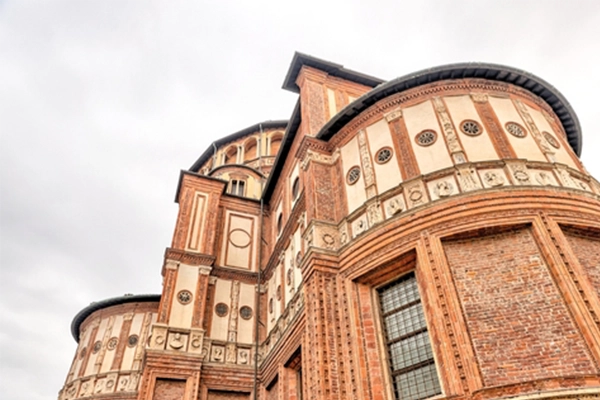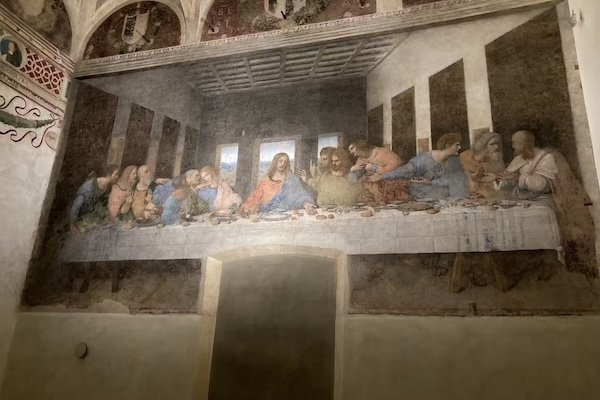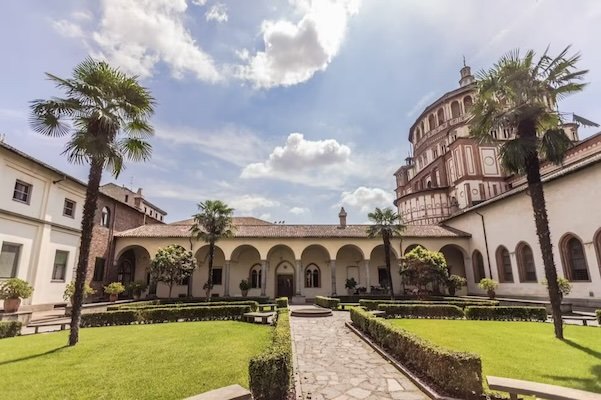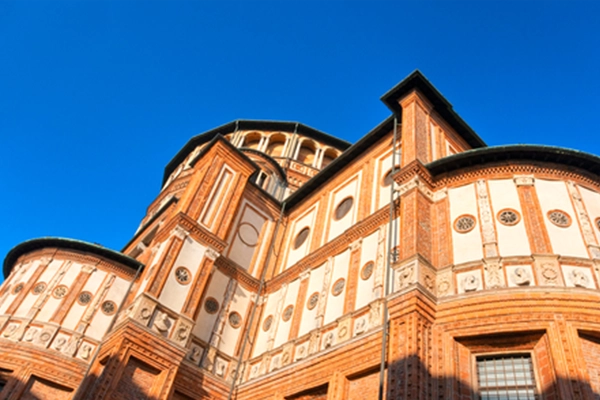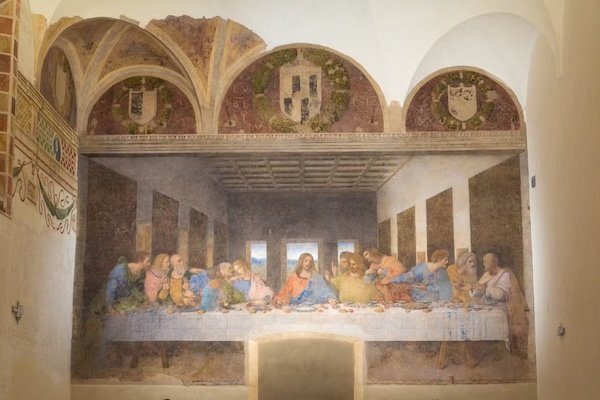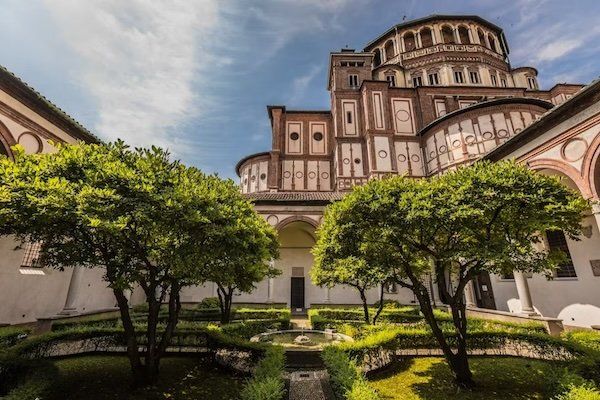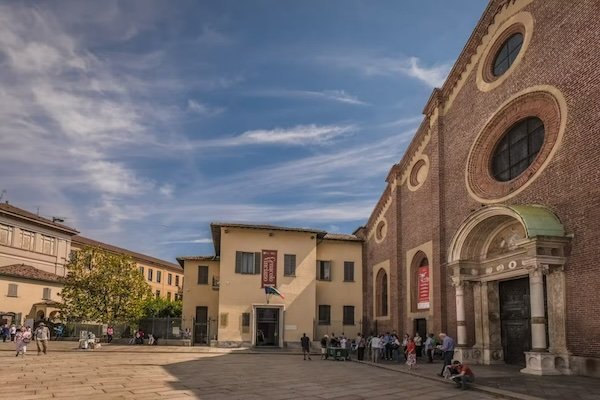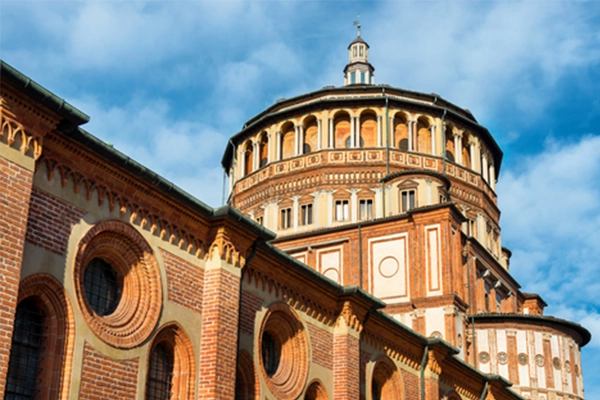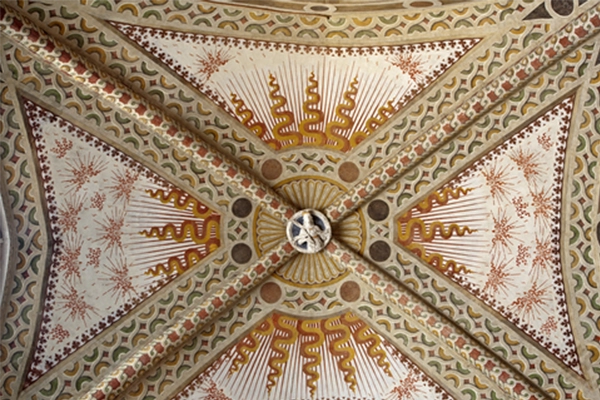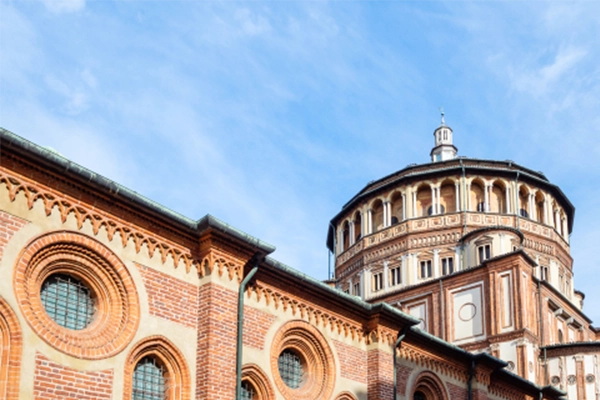Last Supper Painting & Other Attractions of Santa Maria delle Grazie
Last Supper Painting & Other Attractions of Santa Maria delle Grazie
Step into a captivating blend of art, history, and faith at the Church and Dominican Convent of Santa Maria delle Grazie in Milan, Italy. Within the hallowed walls of the church dedicated to the Marian devotion of Saint Mary of the Graces, lies a treasure that draws visitors from across the globe: Leonardo da Vinci’s iconic masterpiece, The Last Supper painting.
But Santa Maria delle Grazie offers more than just one masterpiece. Recognized for its historical and artistic significance, the Church and Dominican Convent of Santa Maria delle Grazie was inscribed as a UNESCO World Heritage Site in 1980. It stands as a testament to Milan’s rich past and continues to inspire and captivate visitors today
Join us now on an exploration of Santa Maria delle Grazie as we unlock the doors to its fascinating church, revealing the attractions of this iconic landmark.
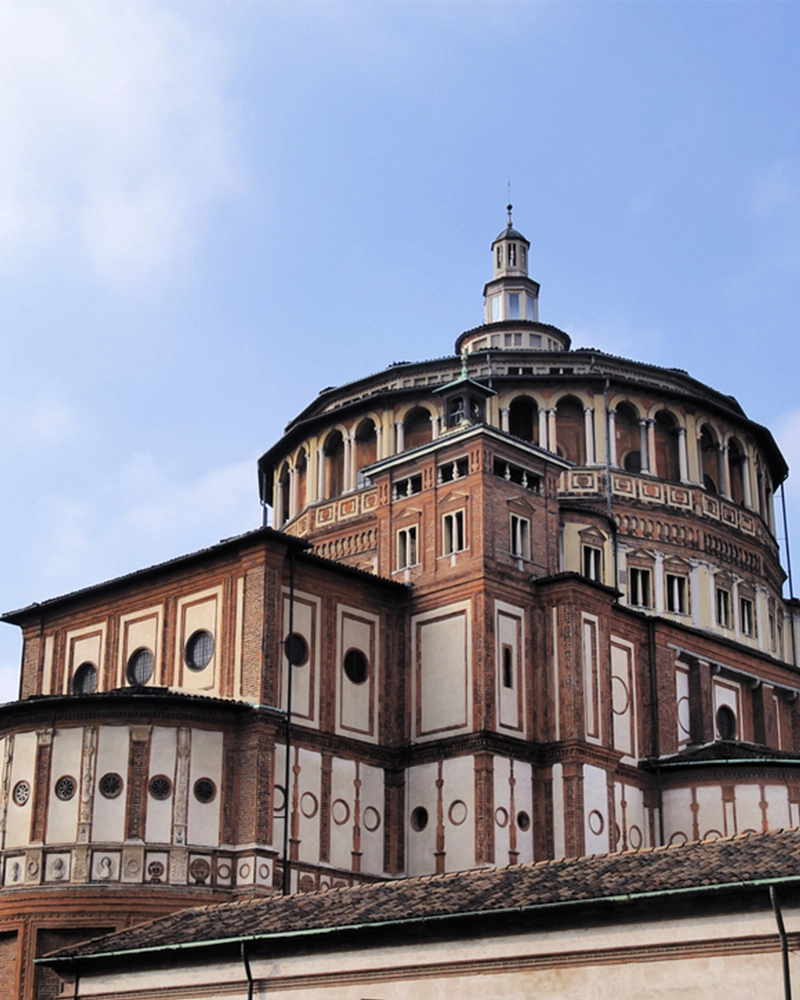
Quick Facts about the Last Supper Painting
- A masterpiece of the High Renaissance: Created by the renowned artist Leonardo da Vinci between 1495 and 1498.
- Location: Adorns a wall in the refectory of the Santa Maria delle Grazie church in Milan, Italy.
- Medium: A unique blend of tempera and oil paints applied on plaster.
- Dimensions: A large mural measuring approximately 460 cm x 880 cm.
- Scene depicted: Captures the dramatic moment of Jesus sharing his final meal with his disciples, known as the Last Supper.
- Artistic technique: Although commonly described as a fresco, Leonardo experimented with a combination of tempera and oil paints, leading to its fragile state.
- History of restoration: The painting has undergone multiple restorations throughout the centuries, with a major one completed in 1999.
About the Last Supper Painting by Leonardo da Vinci
Housed within the Santa Maria delle Grazie church, Leonardo da Vinci’s Last Supper painting is a magnet for art enthusiasts. This breathtaking fresco, created between 1495 and 1498, adorns the refectory wall and depicts Jesus’ final meal with his disciples.
The scene captures a pivotal moment from the Gospel of John: Jesus’ shocking revelation of a disciple’s betrayal. Da Vinci’s genius lies in his portrayal of the profound emotional response to this news, evident on the faces of the apostles.
Visitors are granted a brief 15 minutes to witness this 460 cm x 880 cm masterpiece. Its innovative composition and Da Vinci’s exceptional ability to capture human emotions continue to leave a lasting impression on viewers. Notice the masterful use of perspective, light, and human emotion, leaving a lasting impression on every viewer.
Who is who in the Last Supper Painting?
Leonardo da Vinci’s iconic masterpiece depicts Jesus with the 12 Apostles at the Last Supper. Christ sits in the middle. But where is which apostle positioned? Find out the seating arrangement!
What else is inside the Santa Maria delle Grazie?
Beyond the Last Supper painting, there are many more gems to be explored. See below some other highlights:
A Fusion of Architectural Charm
- Gothic Grandeur: As you enter, the soaring ceilings and pointed arches transport you back to the Gothic era. Look for the ribbed vaulting, stained-glass windows, and intricate stonework that define this architectural style.
- Renaissance Refinement: Transitioning into the Renaissance period, the church’s central plan and harmonious proportions reflect the artistic shift towards classical ideals. Observe the use of pilasters, domes, and a sense of balance in the design.
Artistic Jewels
- Crucifixion by Giovanni Donato Montorfano: In stark contrast to the serenity of the courtyard, Montorfano’s powerful sculpture of the Crucifixion displays raw emotion and dramatic tension. The life-size figures and use of light and shadow evoke a sense of awe and reflection.
- Along the corridor leading to the refectory, large fragments of frescoes from the mid-17th century have been preserved, depicting a martyr scene, possibly the episode of the murder of 49 Dominicans in Sandomierz, Poland.
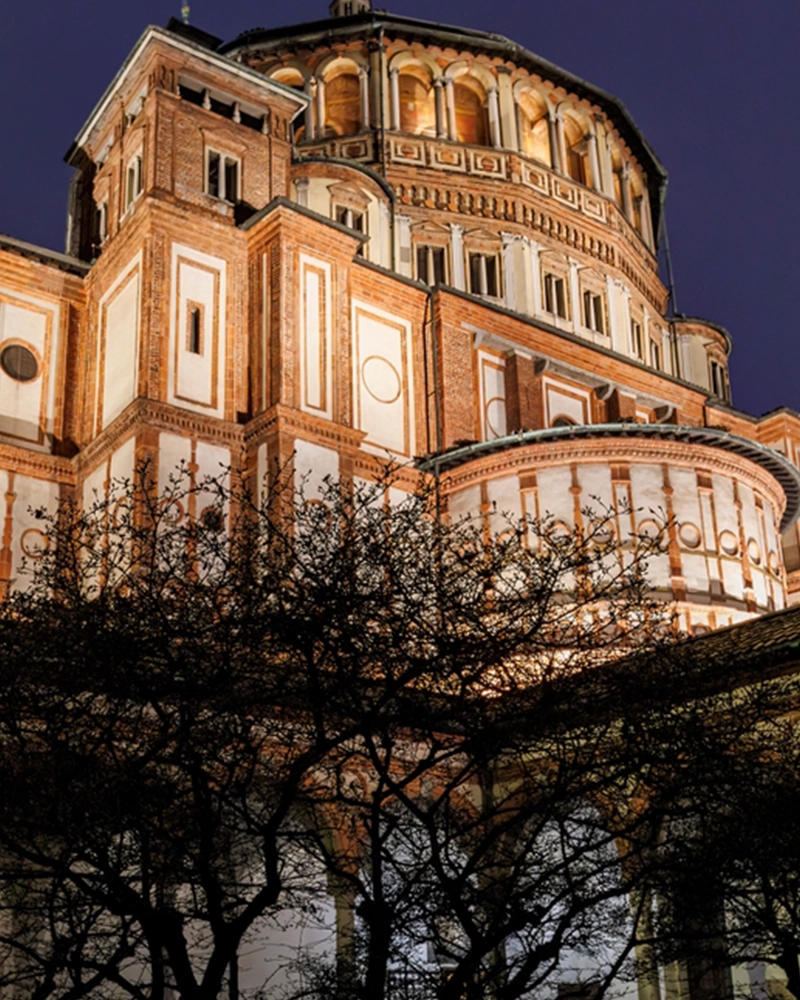
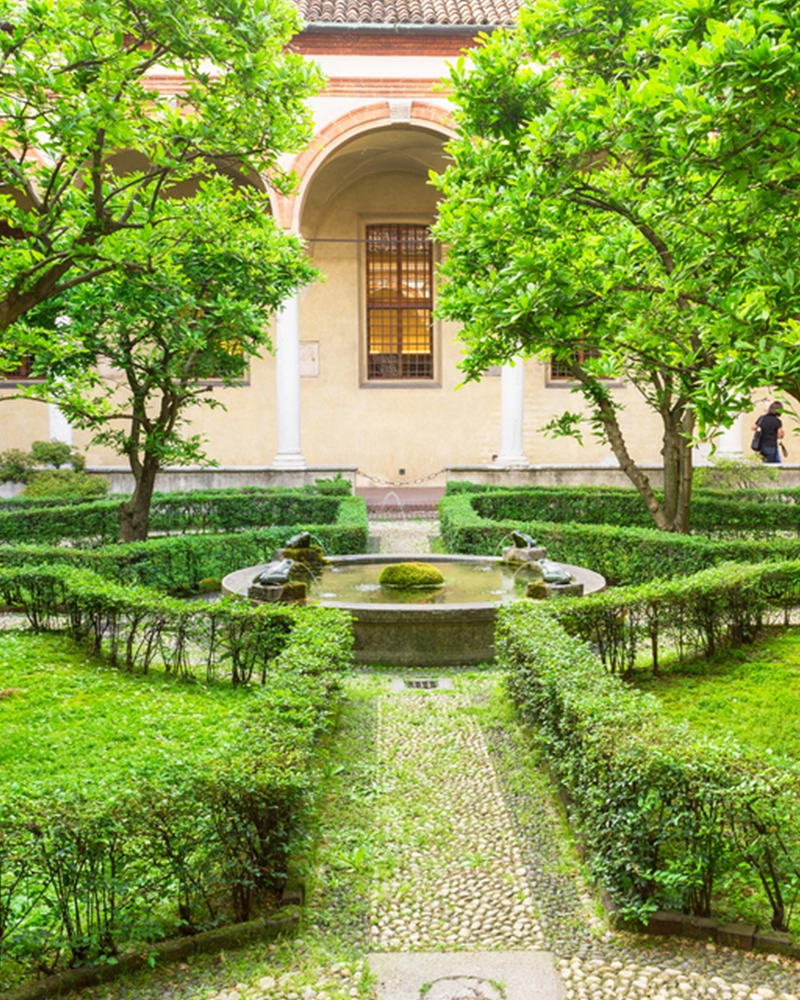
A Spiritual Haven
Stepping into the church’s main hall, a sense of serenity washes over you. The soft light filtering through the stained-glass windows, the harmonious architectural lines, and the gentle murmur of prayer create a space conducive to reflection and spiritual contemplation.
A Tranquil Escape
The church’s tranquil courtyard offers a welcome respite from the bustling city streets. Lush greenery, serene fountains, and a peaceful atmosphere provide a space for quiet contemplation or simply a moment to pause and appreciate the beauty of the surroundings.
Architecture of the Santa Maria delle Grazie Church
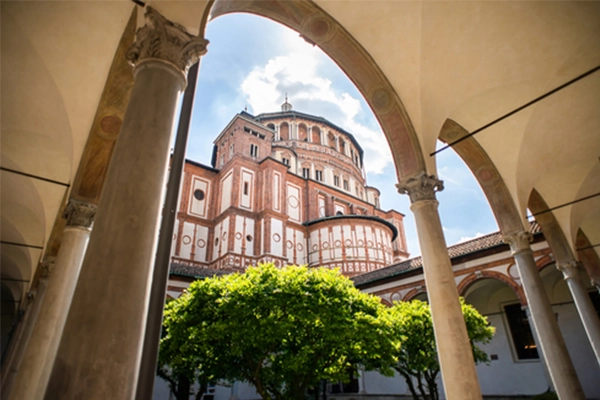
A Blend of Styles
Standing tall in the heart of Milan, Italy, Santa Maria delle Grazie is a captivating example of how architectural styles can blend harmoniously. Commissioned in the mid-15th century by Francesco Sforza, Duke of Milan, the church and its adjoining convent showcase a fascinating interplay of Gothic and Renaissance elements, reflecting the artistic transition taking place in Italy during this period.
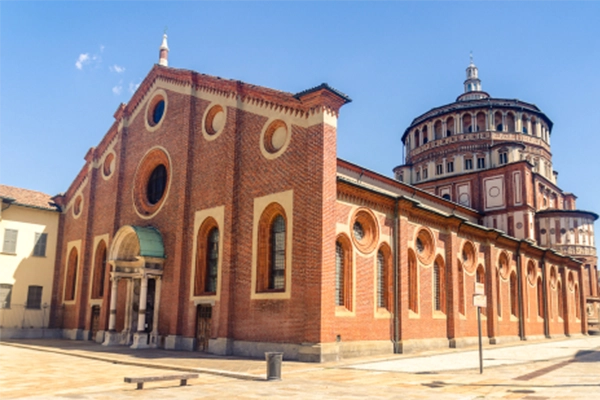
Early Construction and Gothic Influences
The initial design of Santa Maria delle Grazie is attributed to Guiniforte Solari, renowned for his Gothic architecture expertise. Construction began in 1466, and the completed convent, unveiled in 1469, embodies the hallmarks of Gothic style:
Soaring Vaults: The nave boasts impressive ribbed vaults, a signature Gothic feature that creates a sense of verticality and majesty within the space. These vaults are supported by sturdy pillars with slender engaged columns, adding a touch of elegance.
Pointed Arches: Throughout the church, pointed arches are evident, particularly in the doorways and windows. This signature element contributes to the overall Gothic aesthetic and reinforces the sense of verticality.
Stained-Glass Windows: Large stained-glass windows adorn the nave walls, filtering light and casting colorful hues onto the interior. While the specific artists and themes of these windows are not readily available, they contribute to the mystical and spiritual atmosphere of the church.
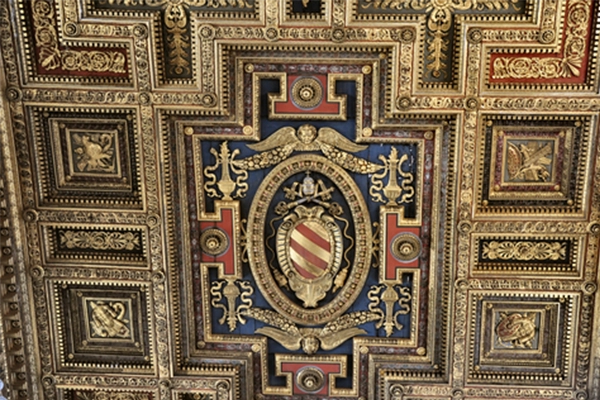
Renaissance Influences and a Shift in Focus
As construction progressed beyond the initial stages, the influence of the Renaissance movement began to permeate the design. This shift is most evident in the central plan of the church, attributed to Donato Bramante, a prominent Renaissance architect. This central plan, with its emphasis on symmetry and proportion, deviates from the traditional longitudinal layout often seen in Gothic churches.
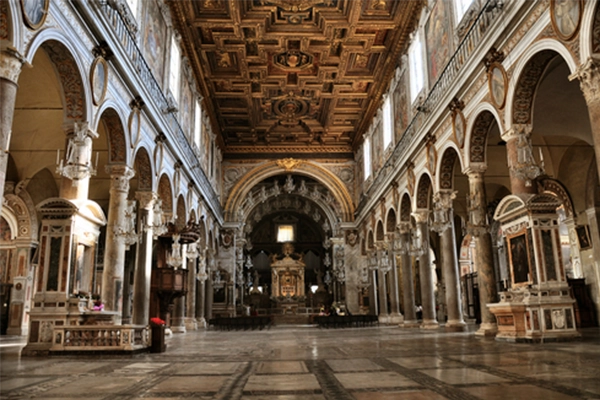
Additionally, subtle details throughout the church exhibit a more Renaissance approach
Rounded Arches: While pointed arches remain present, rounded arches begin to appear, reflecting a shift away from the verticality and towards the horizontal emphasis favored by the Renaissance.
Emphasis on Light: The design incorporates larger windows and strategic placement of openings, allowing for greater natural light to enter the space. This embodies the Renaissance ideal of creating a brighter and more open environment.
Geometric Elements: Subtle geometric patterns and decorations can be found throughout the church, reflecting the Renaissance fascination with mathematical harmony and classical forms.

A Harmonious Convergence
The masterful blend of Gothic and Renaissance elements in Santa Maria delle Grazie creates a unique and captivating architectural experience. The soaring Gothic vaults and pointed arches coexist alongside the central plan and emphasis on light, exemplifying the harmonious transition between artistic styles.
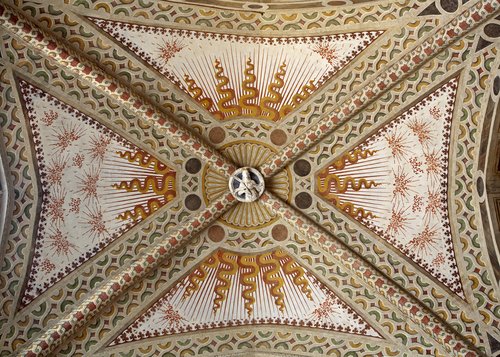
Beyond the Nave
While the main hall serves as a prime example of the architectural blend, other elements of the complex deserve mention:
The Refrectory: This rectangular space, where Leonardo da Vinci famously painted The Last Supper, showcases a simpler and more practical design, with a beamed ceiling and a large doorway added later, unfortunately damaging the fresco.
The Old Sacristy (Sagrestia Nuova): This room, completed in the 16th century, features Renaissance elements like rounded arches and pilasters, further highlighting the ongoing artistic dialogue within the complex.
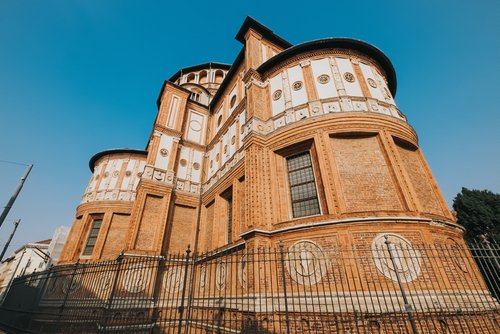
A Testament to the Artistic Spirit
Santa Maria delle Grazie stands as a testament to Milan’s artistic evolution and the dynamic interplay between architectural styles. It offers a captivating journey through time, showcasing the transition from the soaring majesty of the Gothic to the harmonious balance of the Renaissance.
FAQ about Leonardo da Vinci and the Last Supper Painting
Santa Maria delle Grazie Tickets
Explore below our curated selection of Santa Maria delle Grazie tickets and guided tours:
With this Santa Maria delle Grazie Ticket, immerse yourself in the iconic Last Supper painting during a 1-hour guided tour. Spend 15 minutes in front of the world-famous mural, absorbing the fascinating history behind it from your guide.
“Tour was excellent! Guide was fantastic! Be aware there are several tours and guides in the center where you meet, ask around to make sure you get the right tour, be early, and enjoy” Erik – Mar 2025
Join a Historical Walking Tour of Milan, inclusive of a Skip-the-line Santa Maria delle Grazie Ticket. Enjoy fast-track entry to Leonardo da Vinci’s Last Supper, followed by a leisurely stroll to iconic landmarks such as the Duomo, La Scala, and Sforza Castle, among others.
“The guide was absolutly outstanding!! Very knowledgable and very engaging.” Anonymous, June 2024
Secure your visit to the world’s most famous Renaissance mural, the Last Supper, with a guaranteed Santa Maria delle Grazie Ticket. Additionally, discover the highlights of Milan on this 3.5-hour half-day guided bus tour.
“The guide is very attentive, you can tell that he is very passionate about the tour, always telling us interesting facts. The only thing I ….” Emilio Aguirre, Sep. 2023
Save time and money with this combo deal, featuring a Da Vinci’s Last Supper Skip-the-Line Guided Tour with a Santa Maria delle Grazie Ticket, coupled with YesMilano’s 3-day city pass. The city pass includes free public transportation in Milan and entry to various top attractions.
“The tour guide explained very well and with humor throughout the tour making us at ease. The tour to the last supper would have been uninteresting and kind of bland if we had not have anyone guiding us.” Wong; December 2023

